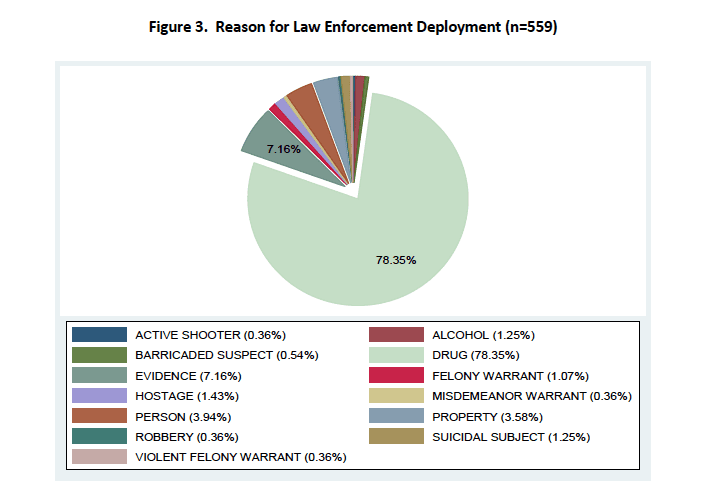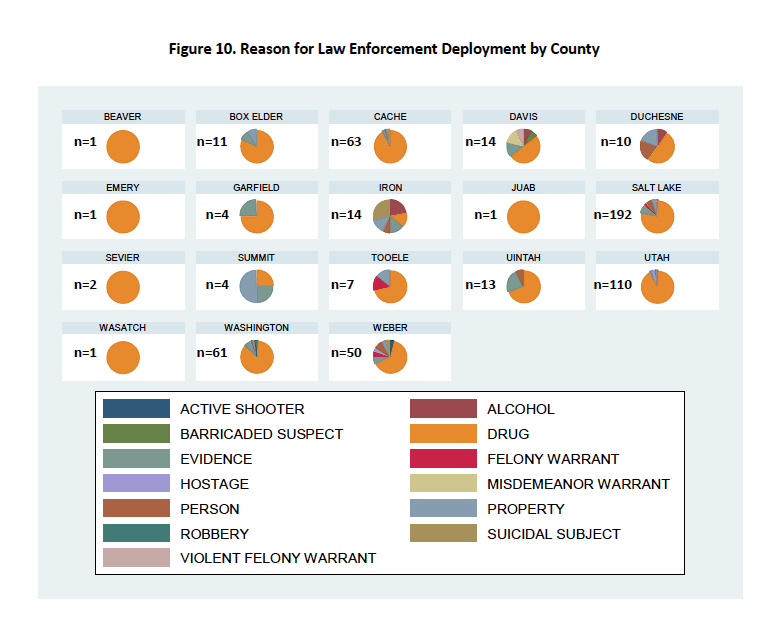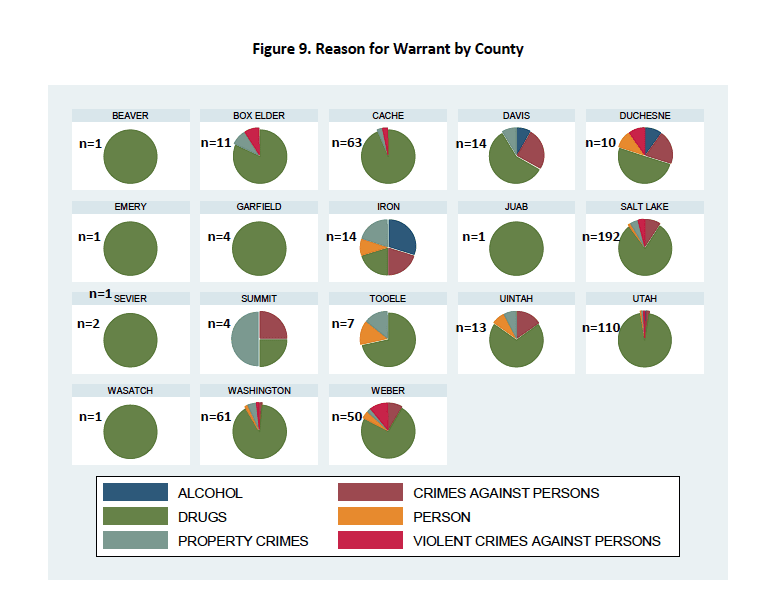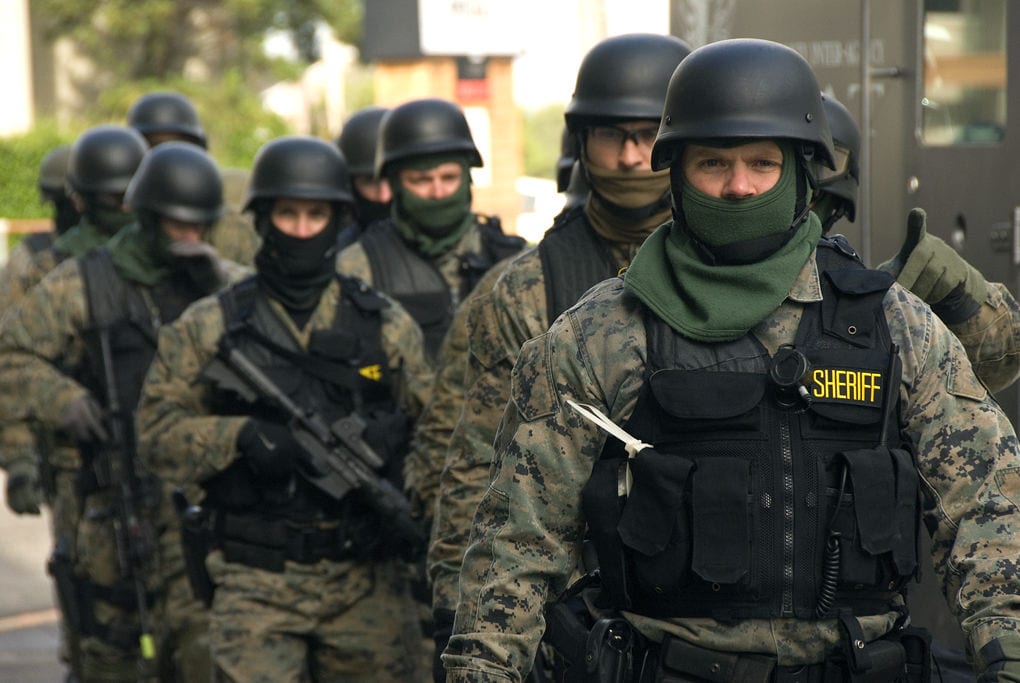According to a report released last week by the Utah Commission on Criminal and Juvenile Justice, if police have a warrant for your arrest in Utah, there is a 61 percent chance that they will serve it with a tactical law enforcement team and a 38 percent chance that the team will kick down your door in the middle of the night.
The 2014 Law Enforcement Transparency Annual Report was released as a result of legislation passed last year requiring all Utah law enforcement agencies to provide data regarding their use of tactical, non-tactical, and or task force teams in law enforcement interactions. The report was paid for by a federal Department of Justice grant.

The legislation, SB 185 of 2014, was sponsored by Republican Sen. Deidre Henderson at the request of the Libertas Institute, according to Connor Boyack, president of the Libertas Institute.
According to the Libertas website, the mission of the institute is “to advance the cause of liberty within the State of Utah by supporting and defending individual liberty, private property, and free enterprise. The Institute promotes liberty by generating non-partisan analysis and commentary on public policy issues relating to Utah, and recommending our findings to opinion leaders, policy makers, media, and interested Utahns.”
Boyack said the Libertas Institute was concerned that Utah law enforcement tactical teams were being overused in situations that did not warrant them to carry out routine law enforcement activities.
SB 185 became law in March of 2014. The law requires all Utah law enforcement agencies to report incidents that utilize a tactical group—defined as “a special unit, within a law enforcement agency, specifically trained and equipped to respond to critical, high-risk situations”—or any time law enforcement made a forcible entry in the course of serving a warrant or making an arrest.
“Until this legislation we proposed, there was no transparency of government to show the landscape of how law enforcement was using force,” said Boyack.

Boyack said the Libertas Institute got involved as a way to create a system wherein legislators would have accurate information when crafting laws regarding the use of forceful interactions.
The findings of the report cover a wide range of information useful to lawmakers and Utah law enforcement agencies regarding how tactical, non-tactical, and task force teams teams are used.
The vast majority of incidents involved warrants or arrests for drug possession, use, or distribution, with 83 percent of all incidents reported being drug related.
Another piece of legislation proposed by the Libertas Institute would prohibit law enforcement agencies from using dynamic entry solely for drug possession or use. These Forcible Entry Amendments to the Utah Code of Criminal Procedure would only allow Utah law enforcement teams to carry out a forcible entry in cases where drug distribution or other factors were present that would increase the danger to law enforcement.
Another notable result of the report was the number of times Utah law enforcement officers made forcible entry without knocking or announcing themselves to the residents of the home. These “No-Knock-Night” incidents are when law enforcement sneaks up on a residence and knocks down the door, forcing their way inside. These accounted for 38 percent of all dynamic entries reported by law enforcement. “Knock and Announce-Day” entries accounted for 36 percent of entries, but Boyack says there is really very little difference for all practical purposes.
“Many of these knock and announce entries are not substantially different from no-knock entries,” he said. “In many cases, the knock and announce entry consists of an officer knocking on the door, announcing ‘police department’ then immediately knocking down the door.”
He said Libertas Institute has also pursued legislation that would require officers to wait a sufficient amount of time for an occupant to respond before forcible entry could be made.
Of all of the 559 unique incidents reported for 2014, suspects only possessed weapons in three incidents, and shots were only fired at police one time. In the same period of time, three civilians were injured, and another three were killed with no injuries or deaths to officers during these dynamic entries.
The report also sought to determine patterns of how Utah law enforcement teams are used, comparing incidents per capita to glean a clear picture on whether they are being used proportionately to their populations.
Both Iron and Washington counties in Utah had high tactical team use for forcible entry compared to their population. Iron County, with a population 46,870, used these teams 14 times in 2014, and Washington County, population 147,800, had 61 incidents that qualified for reporting.
This works out to be a rate of one law enforcement forcible entry incident per 3,348 residents in Iron County, and in Washington County it is one in 2,423. In Salt Lake County, with a population of 1.8 million, the rate is one incident per 9,375 residents. Cache County, with a population of only 116,909, had 63 incidents, giving it a rate of one in 1,855.

In Iron County, the reasons for entry were distributed with 21 percent of entries made in response to alcohol. Aggregate data was not available at press time, but the pie chart displayed showed a relatively even distribution between drugs, property crimes, crimes against persons, and violent crimes against persons with a smaller portion related to warrants for persons. The vast majority of tactical team entries in Washington County, however, were related to drugs, with only very few related to the other types of crimes.
Boyak said that, in his experience, the willingness of an agency to use this type of force for an arrest differs from department to department.
“Some agencies have a reluctance to use this type of force,” he said. “Other agencies do not use a threat assessment matrix and make the decision at the whim of the decider as to whether to bring that potential level of violence to a situation.”
According to Iron County Sheriff Mark Gower, the Sheriff’s SWAT Team was not used for any tactical entries in 2014, but his SWAT team, of which he is a member, does not use a threat assessment matrix.
“We don’t use a matrix,” said Gower. “Many of the trainings I have been to discourage that, because you are then letting a document determine your response. It can be a useful tool in making that determination, but there are a lot of other factors that you have to use to make that determination.”
The Cedar City Police Department has its own SWAT team but was not available for comment.
According to the report, 25 percent of the Utah law enforcement agencies failed to obey the provisions of SB 185 and provide data. Under the law, non-reporting agencies are compiled into a list and provided to the attorney general’s office and the Utah State Legislature, but there are no penalties for non-compliance.
“The legislature was very unwilling to hold government accountable,” said Boyack. “There was no will to impose any penalties on non-compliant law enforcement agencies.”
Boyak said that these agencies will most likely receive an invitation to testify before the legislature as to their incidents and why they chose not to obey the law.
“The [Law Enforcement and Criminal Justice] Committee is made up of diverse people with diverse political leanings, so I am sure that there will be questions about why they failed to comply with the law.”
However, according to Lt. Troy Burnett of the Ogden City Police Department and commander of the Weber-Morgan Strike Force, it is not about disobeying the law as much as it is about how the reports are categorized. Each department has its own Originating Reporting Identifier (ORI), and in the cases of many task forces, the report is filed by the locality where the incident occurred.
“We don’t have our own ORI, so the incident gets reported, but it is not reported by the strike force, which is made up of guys from Ogden, Roy, and several other localities,” said Burnett.
Burnett said that because of this, there has been talk among chiefs of police to provide task forces with their own ORIs for reporting purposes.




